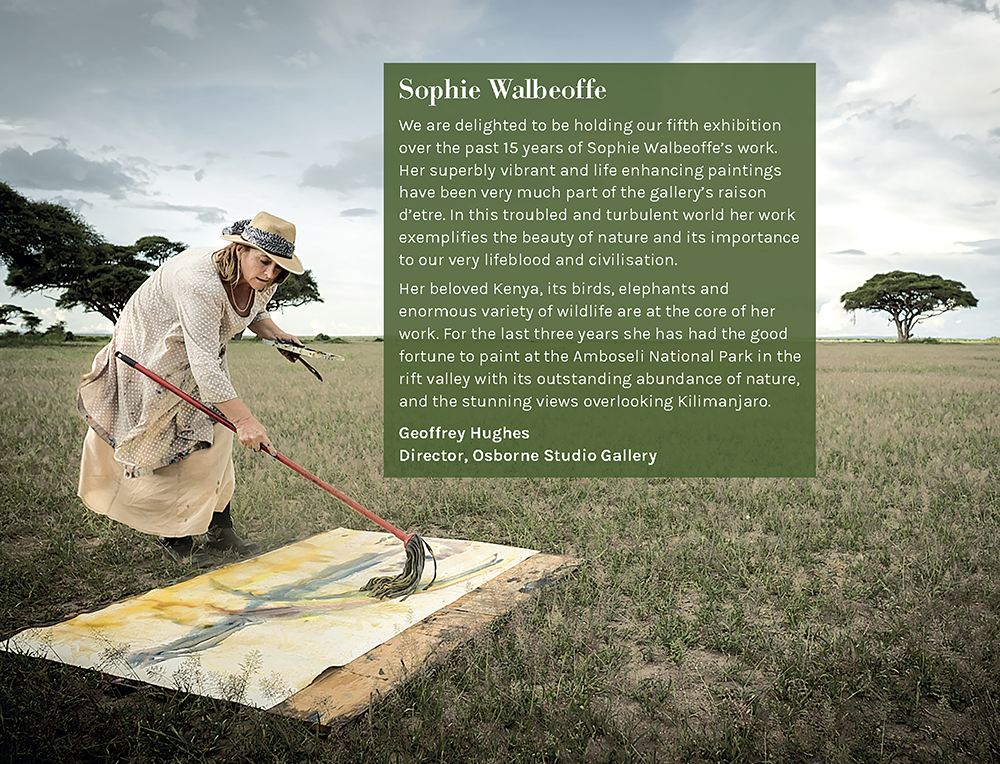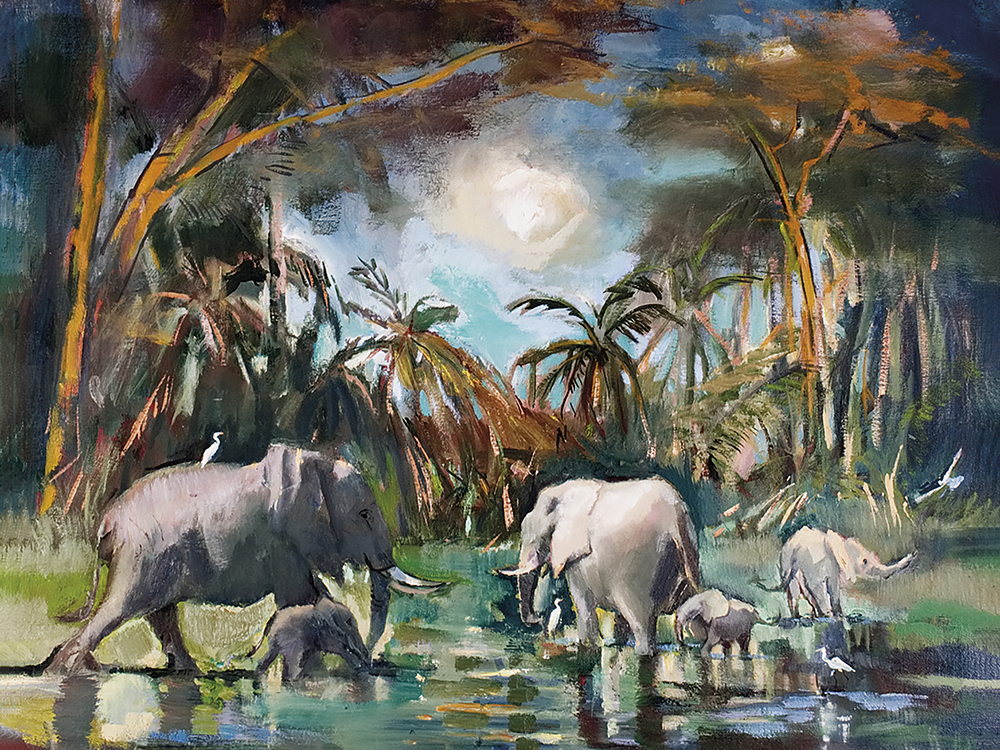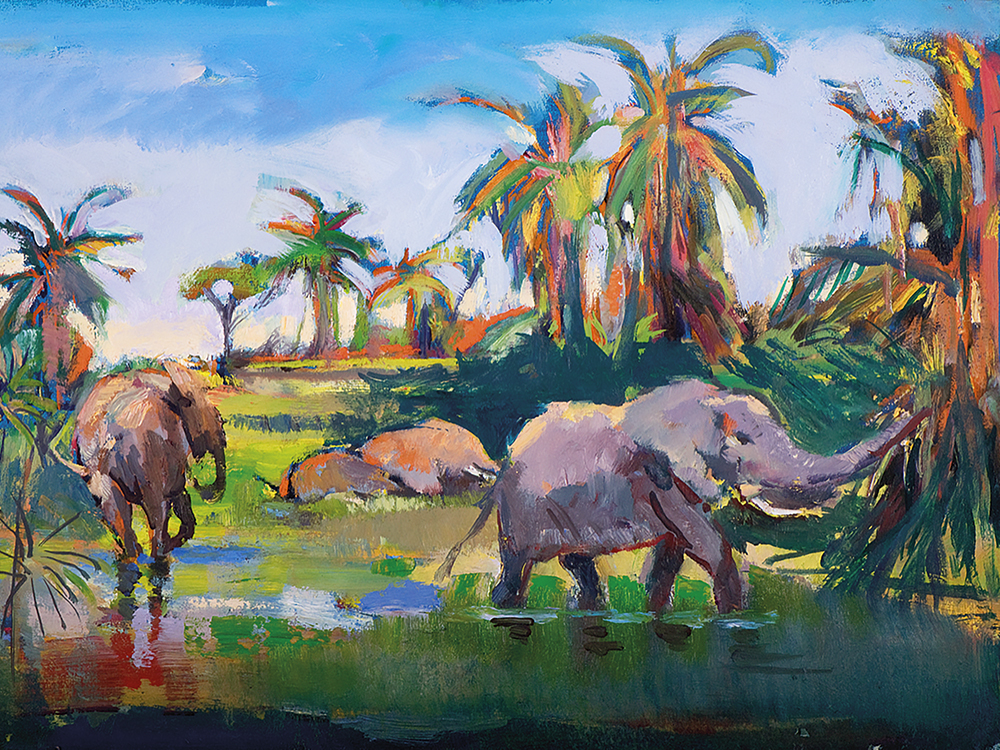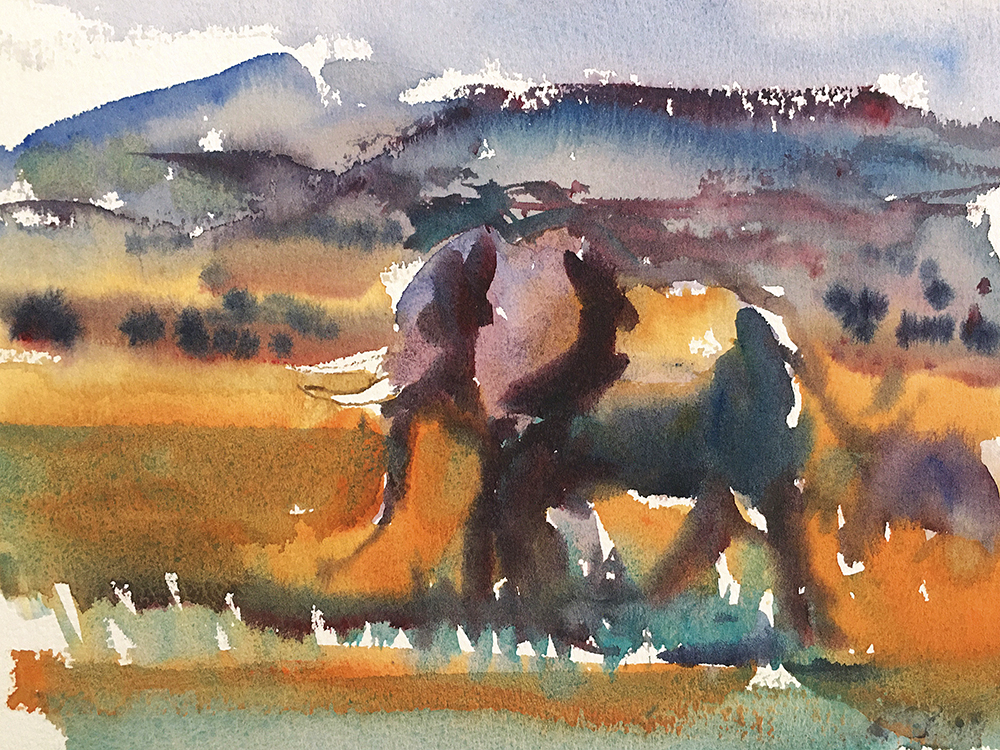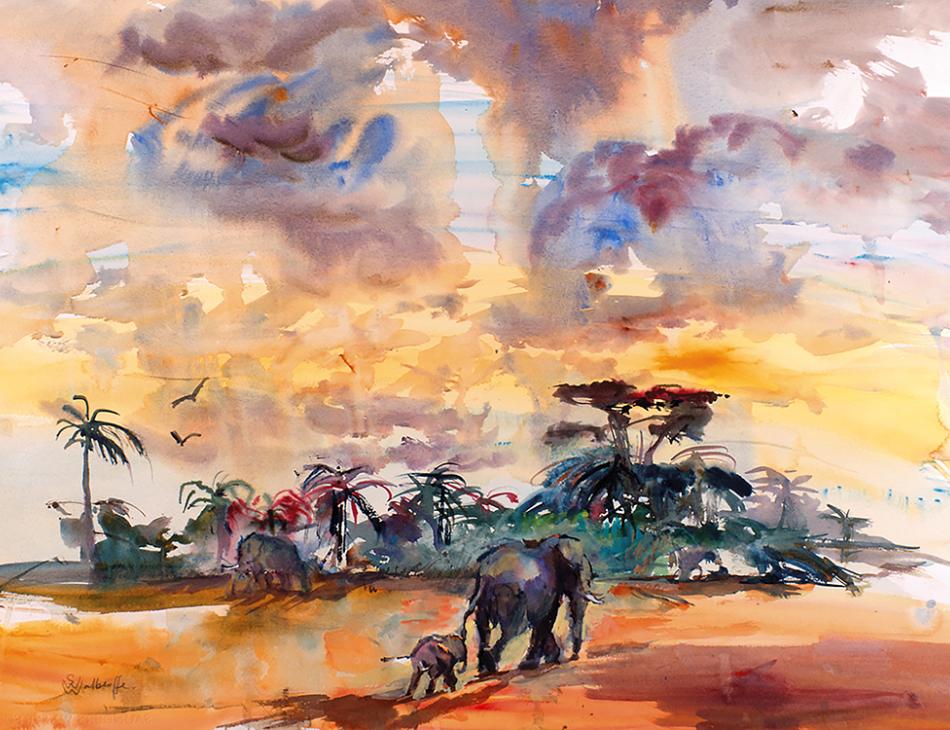SOPHIE WALBEOFFE-BIRDSONG- INSPIRED BY AMBOSELI NATIONAL PARK-KENYA
NEW ONLINE EXHIBITION OF 60 PAINTINGS BY SOPHIE WALBEOFFE
‘BIRDSONG’
INSPIRED BY AMBOSELI NATIONAL PARK, KENYA
Sophie Walbeoffe brings families of elephants, zebras, birds, and their lush surrounding landscape, to shimmering life.
At the Osborne Studio Gallery
Tuesday 19th May – Saturday 6th June 2020
Accompanying book ‘Impressions of Ambolesi’ by Sophie Walbeoffe and elephant expert Dr Cynthia Moss
Sunrise from my Tent
‘No one can resist the Lure of Africa’ Rudyard Kipling
British artist Sophie Walbeoffe arrived in Africa in 1987 as ‘resident artist’ with Operation Raleigh, Prince Charles’ adventure project for young people.
She never returned to live in England again.
Sophie Walbeoffe (born 1961) studied fine art at Wimbledon School of Art, later with Cecil Collins at the Central School of Art, a teacher inspired by Eastern spirituality, who encouraged his students to use their hands, and more eccentrically, their mouths and feet.
‘He taught the use of the reed pen, red chalk, and 4 B and 2 B pencils – all using both hands. When painting on site, he gave me a new energy in trying to paint the air, the atmosphere and the movement of the soul in order to freeze a moment in time.’
From this moment Sophie adopted a spontaneous way of working, ‘It is more impulsive, and creates magic straight away.’
HOW SOPHIE FELL IN LOVE WITH AFRICA
‘At sixteen I met my husband, Piers Simpkin, at a boarding school dance in England. He came from Kenya, he was fascinating and gorgeous. I was entranced by his stories of animals, especially Elsa the lioness, and his life in Africa. He sent me loving letters, which I ignored. I was not yet ready for ‘Life.’
We met again in a village in Kenya when I was working on Operation Raleigh. After a few days I remembered that first kiss twelve years before. I was a different person, unrecognisable at 28 from 16. We married a year later.
I continue to live in Kenya, the birds are singing in my garden overgrown with spinach and maize. We are self-isolating in my studio. Piers is working for the Kenya county government and looking after his herd of camels, that we may not be able to visit for a while. He has made a lifelong study of camels and arid lands.’
CREATIVE PROCESS
‘I was taught to dislike the word ‘technique’ but instead to look, see, feel and put it down truthfully without preconceived ideas of ‘how to.’ Each time I start a painting, I try to forget everything I know. But, of course, one does develop ways of working Watercolour is an unfashionable medium and also very British, and I love to feel an empathy with both those things. I have been experimenting with collage, colour, and abstract painting, one never stops gaining knowledge.'
THE EFFECT OF AFRICA ON MY WORK
'Living in Africa has given me the chance to work with beautiful light and warmth, which dries colours quickly, and provides a very loose effect. Because of the large skies and enormous landscapes, I have wanted to paint bigger and bigger pictures. When I travel, I take large sheets of paper rolled into a plastic tube with a mop stuck in the middle.The mop acts as a large paint brush.'
MY WAY OF WORKING
‘As a travel painter, the world is my studio, forgive the cliché. I designed and built an airy studio in the woods of our garden in Nairobi. I mostly use the studio for still life painting and big compositions. When I work en plein air, I paint what I see very fast, usually with both hands. When in the studio, I paint what I feel and remember, more slowly.'
PAINTING ON SAFARI - ADVICE FOR THE TRAVELLER
‘On safari in Kenya, you are not allowed out of the car in any of the parks, in case you might come too close to a wild animal. Painting in reserves or conservation areas often gives you freedom to paint outside your vehicle, but still look out for animals.
I prefer not to work from photographs. I often think the camera, rather than the artist, is in the painting. Much more enriching to work from our drawings and feelings.
It is astonishing what you can remember about an African landscape, when you have looked at it at length. You remember the smell of Africa, the colour of the bush, the light on the animals and the dust of their movement, the changing colours of dawn and dusk. These recollections and study notes will p bring our paintings to life.'
THE EVOLUTION OF MY NEW EXHIBITION, ‘BIRDSONG.’

‘For the last three years I have been painting in Amboseli National Park, guided and excited by Dr Cynthia Moss, the world famous scholar of elephant behaviour. In addition to concentrating on the elephants and the stunning landscape of Amboseli, with the towering backdrop of ice capped Kilimanjaro (Africa’s highest peak), I started to become interested in the birds.
Whenever we sat in the Land Rover, waiting for the elephants to pass, it was the birds that produced a similar rush of excitement.
Pelicans, flamingos, ibis, waders and water birds, scarlet breasted bee eaters, and golden weaver birds, I have painted them all. The fluttering freedom and colour of the birds, link the infinite space between earth and sky, in contrast to the heavy, grey and grounded elephants. Birds don’t have any borders, they travel around the world. I love to see the swallows and travellers in my Kenya garden. Climate change has brought incessant rain, but also hot bright sunny days when the birds never stop singing.’
To visit the Birdsong exhibition go to: https://www.osg.uk.com/exhibitions/birdsong/
